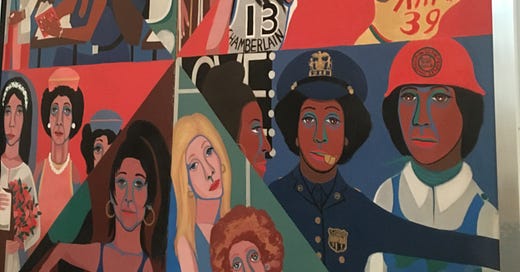Making a way out of no way
Manifestation, is this popular mindfulness technique prosperity gospel or an African American trope?
In the story of Black people in this country, a theme, recurring phrase, and trope that feels mystical is “making a way out of no way.” The phrase feels biblical and calls on Moses and other Old Testament stories where, in an hour of desperate need, God helps his people cross over. However, the phrase also calls on the imagery and stories of enslavement. Harriet Tubman shepherding Black people towards freedom despite certain death. Black people living during Jim Crow and surviving despite the ever-present threat of violence. The symbolism and mystical energy also find its way into pop culture. Tupac sings about “making a dollar out of 15 cents” in “Keep Ya Head Up.” Modern parlance would call this manifesting.
On the surface, all of this has nothing to do with friendship. And yet, my journey into dissecting this phenomenon started as I was researching friendship and African American women’s traditions and culture around friendship. As I am looking into 19th-century Black Women’s free societies, I have been reading about how Black women subvert the aesthetics of Victorian sentimentality but for political and social purposes. So, friendship albums operate like an 1800s “vision board,” except imagine making a vision board about abolition or immigration. Or hiding political and social movements in a vision boarding party you host with your women’s society luncheon.
Except for other demographics, manifesting doesn’t have the same meaning and symbolism attached. Recently, I’ve asked folks in my network how they define manifestation. I’ve texted many friends and even asked followers of this newsletter to comment in the chat their thoughts about manifestation, whether or not they believe it, and what the words mean.
In mainstream media and for some white female friends, manifest connects to New Age, woo woo, law of attraction, prosperity gospel rhetoric. In an interview, a researcher at Stanford University says that when we try to “manifest,” we trick our brain into thinking we’ve already achieved our goal. The dopamine rush that comes prematurely can have negative effects on our success. Manifesting in this context means visualizing yourself as rich, with a new job, with an expensive purchase. This vision is powerful enough to keep you where you are doing nothing.
Ironically, racism affects the mind similarly. The illusion of power is so strong for some people (low-income, under-educated Trump voters) that they will do nothing as their rights, which Black people fought for, are stripped away. But I digress…
For Black women, manifesting meant a grounded connection to ancestry and work. Friends talked about the word symbolizing that they were choosing a different path or that they were on a journey that aligned with a higher purpose in life. Words like choice, work, and active faith were a part of envisioning a new future. Manifestation as a practice wasn’t passive but spiritual.
The same word having such a stark difference in meaning fascinated me. Instead of a New Age prosperity gospel, manifesting is about the choices you make for Black people. Therefore, manifestation is work that’s grounded in community, purposeful, and supported by faith. It is making a way out of no way.
Over the weekend, the documentary Paint Me a Road Out of Here, about Faith Ringgold’s painting “For the Women’s House,” also incorporated this theme. The documentary simultaneously follows Faith Ringgold creating “For the Women’s House” for a women’s prison on Rikers Island, the painting’s move to the Brooklyn Museum, and artist Mary Enoch Elizabeth Baxter being commissioned for a new work at Rikers. Each storyline—Ringgold’s career and activism, the painting’s journey in and out of detention, Baxter’s journey as an artist— shows how Black people make a way into the art world, out of incarceration, into a more equitable society out of seemingly insurmountable odds. In these cases, you do see the work that’s involved, the failures, and the presence of mind that’s needed to persevere.





